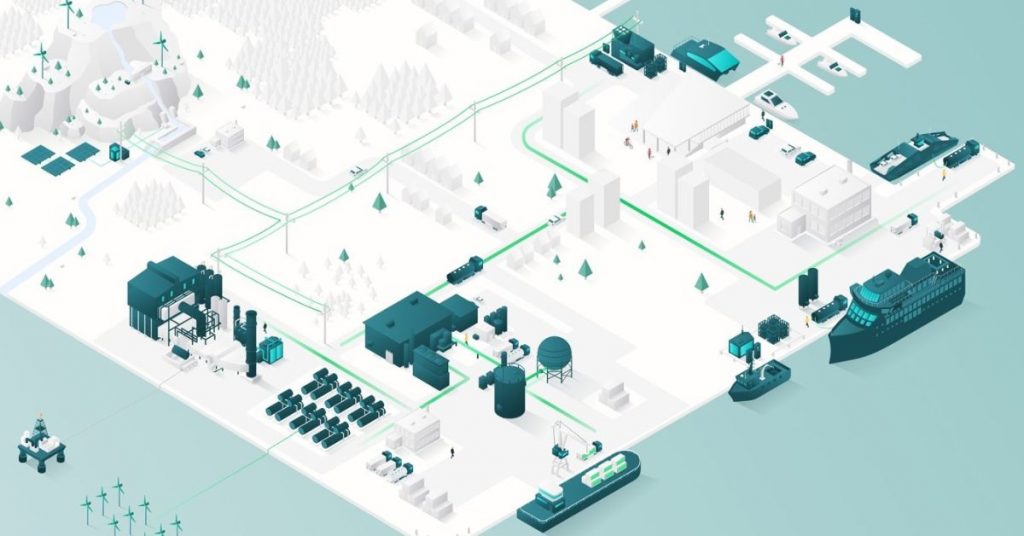A new initiative aimed at developing integrated green energy infrastructure for the maritime sector is set to launch following funding support from Vestland County Municipality. Ocean Hyway Cluster, a leading Norwegian network focused on hydrogen and ammonia solutions, has been awarded NOK 350,000 to undertake a pre-study titled Green Maritime Energy Station (GMES).
The project, coordinated by Ocean Hyway Cluster, brings together a consortium of key players, including Norwegian Hydrogen, AzaneFuel Solutions, LH2 Shipping, and CCB Base Ågotnes. The study will explore the feasibility of co-locating various low- and zero-emission maritime energy technologies — such as hydrogen and ammonia bunkering, battery charging, and shore power — within a unified port infrastructure.
Integrated Infrastructure for a Cleaner Maritime Future
The GMES concept aims to create a scalable and cost-effective model for ports by integrating multiple clean energy solutions into a single hub. This approach is intended to optimize land use in port areas, reduce infrastructure investment and operational costs, and facilitate a smoother transition toward zero-emission maritime operations.
“This funding allows us and our partners to take an important step forward,” said Martin Hennum, Cluster Manager at Ocean Hyway Cluster. “Understanding how different fuel systems can be deployed together is essential to scaling green maritime energy infrastructure efficiently.”
The project’s scope includes technical feasibility assessments, port layout considerations, and analysis of local energy availability. The findings will inform recommendations for pilot projects, business models, and best practices that can be adapted to ports of varying sizes and vessel types.
Regional Roots, Global Relevance
Although based in Vestland County, the project carries broader national and international ambitions. By creating a replicable framework for green energy stations, Ocean Hyway Cluster aims to support Norway’s climate goals while contributing to global efforts in maritime decarbonisation.
“This initiative reflects our commitment to sustainable infrastructure and our vision for Norway as a leader in green maritime technology,” said Project Manager Kjellbjørn Kopperstad, who will lead the study scheduled to run from August 2025 to March 2026.
The GMES project is expected to contribute meaningfully to the wider transition of the maritime industry by offering a flexible blueprint for clean energy adoption at ports — both within Norway and internationally.
Tags: Ammonia Fuel, Green Shipping, Hydrogen fuel, Maritime Innovation, Sustainable



Recent Posts
Stena Line’s Hybrid Ferry Stena Futura Completes Sea Trials, Set to Boost Irish Sea Freight Capacity
Taiwanese owner makes methanol move with WinGD across multiple engine orders
Econowind installs four VentoFoils on tanker M/T JUTLANDIA SWAN
Global Maritime Groups Unite to Launch Alliance for Electrification of Shipping Sector
India Charts Green Future for Maritime Sector with Hydrogen Hubs and Sustainable Port Strategy
ZeroNorth’s SMARTShip platform integrates with ClassNK MRV portal to automate emissions reporting
Towngas Partners with TLB, Pacific Basin to Advance Green Marine Fuel Infrastructure in Hong Kong
SECI Extends Bid Deadline for Green Ammonia Tender Under SIGHT Scheme